Elk are the majestic creatures. They are herbivorous animals with a diverse and adaptable diet. Their feeding habits vary according to season, location, and the availability of food sources. Most of the time they graze on various grasses in meadows and open areas. Additionally, their diet includes a rich assortment of flowers, herbs, and soft plants. When food is scarce in winter, they munch on shrubs and tree bark. Elk’s ability to adjust their food helps them survive in different environments and through changing seasons.
What Do Elk Eat?
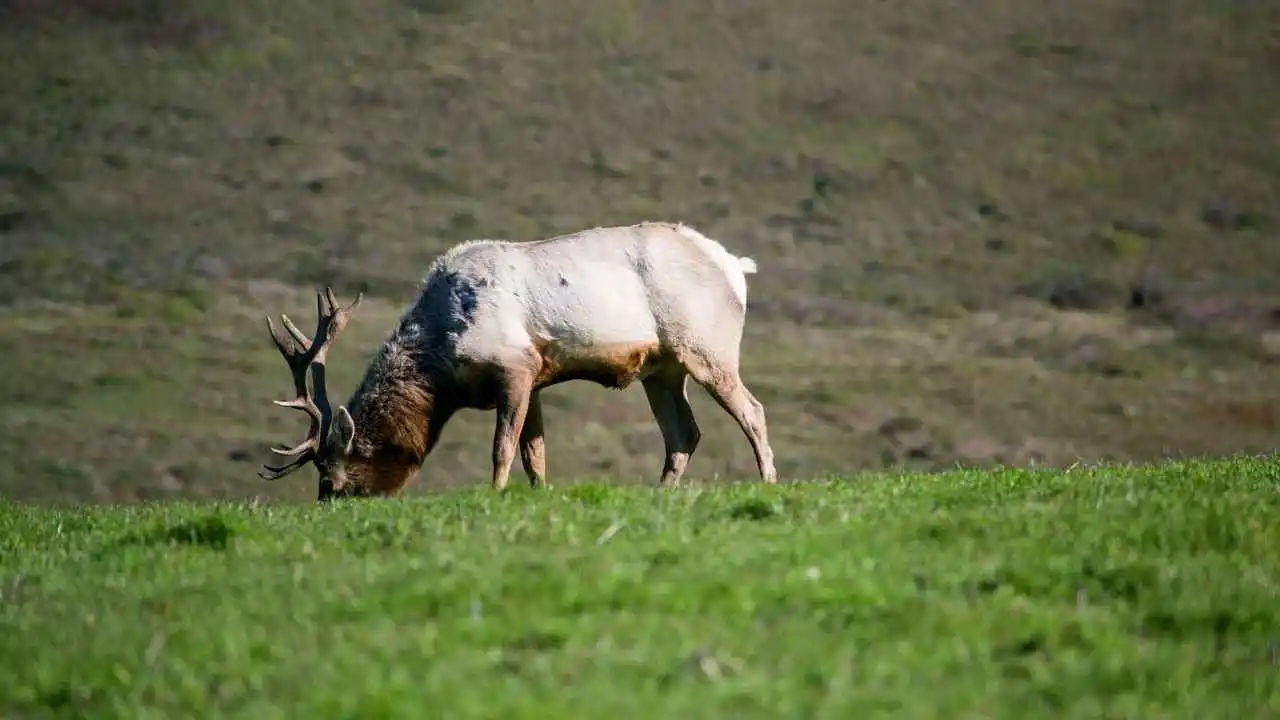
Elk are herbivores because they feed on plants, so their diet consists of:
- Grasses
- Forbes
- Shrubs and Bushes
- Tree bark and Branches
- Aquatic Plants
- Bird bones
- Acorns
- Heather
- Lichens
- Fescue
Overall, their favorite foods are grasses. Elk are adaptable herbivores that adjust their diet based on seasonal changes and food availability.
What Do Baby Elk Eat?
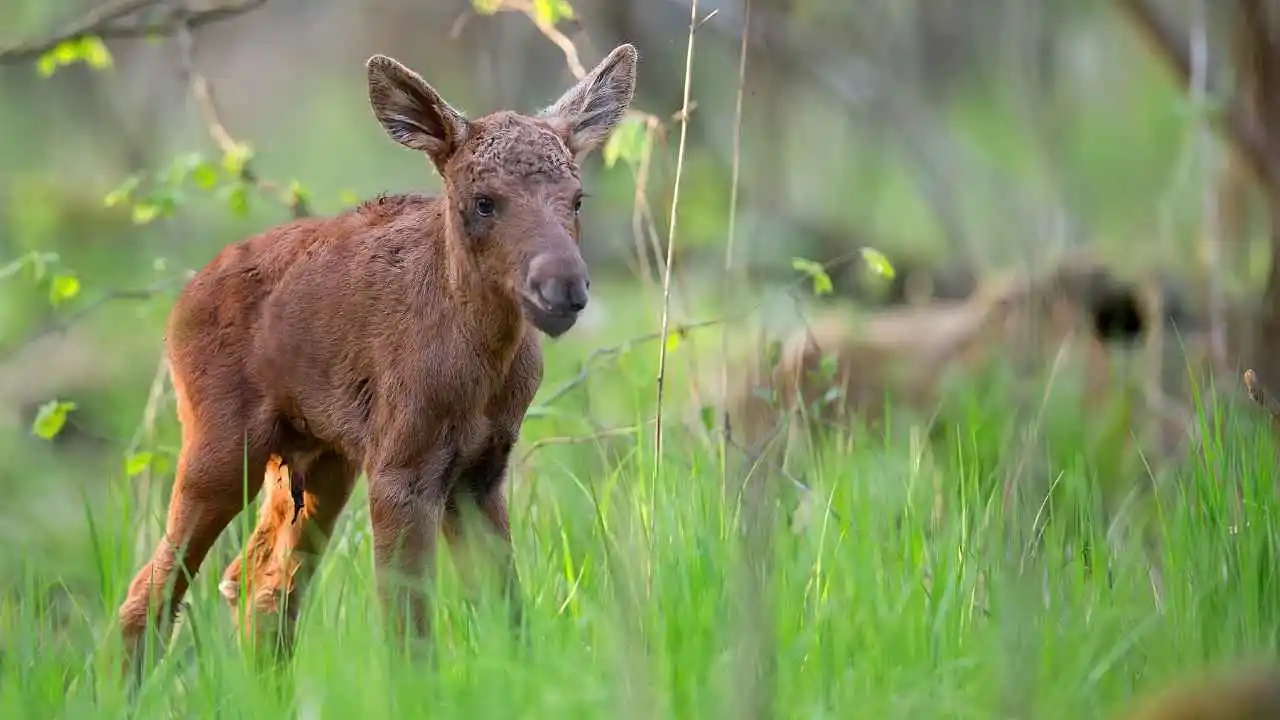
Baby Elks are known as calves. They have specific dietary needs that differ from adult elk. The diet of baby elk primarily consists of their mother’s milk during the first few months of life. Elk calves start to consume solid food, such as grasses and other vegetation, as they grow older.
How do elk hunt?
Elk don’t hunt, as they are plant eaters. They feed on grasses, plants, and shrubs. Elk live in herds and roam in search of food. Male elk might compete during mating season. While not predators, elk are watchful and use their senses to detect danger, often fleeing from potential threats instead of hunting.
How Much Do Elk Need to Eat?
Elks must eat a lot, especially during winters when food is scarce. They eat around 15-20 pounds of forage daily, but this can vary based on factors like the season, the availability of food, and the Elk’s age and sex.
What do elk eat in the winter?
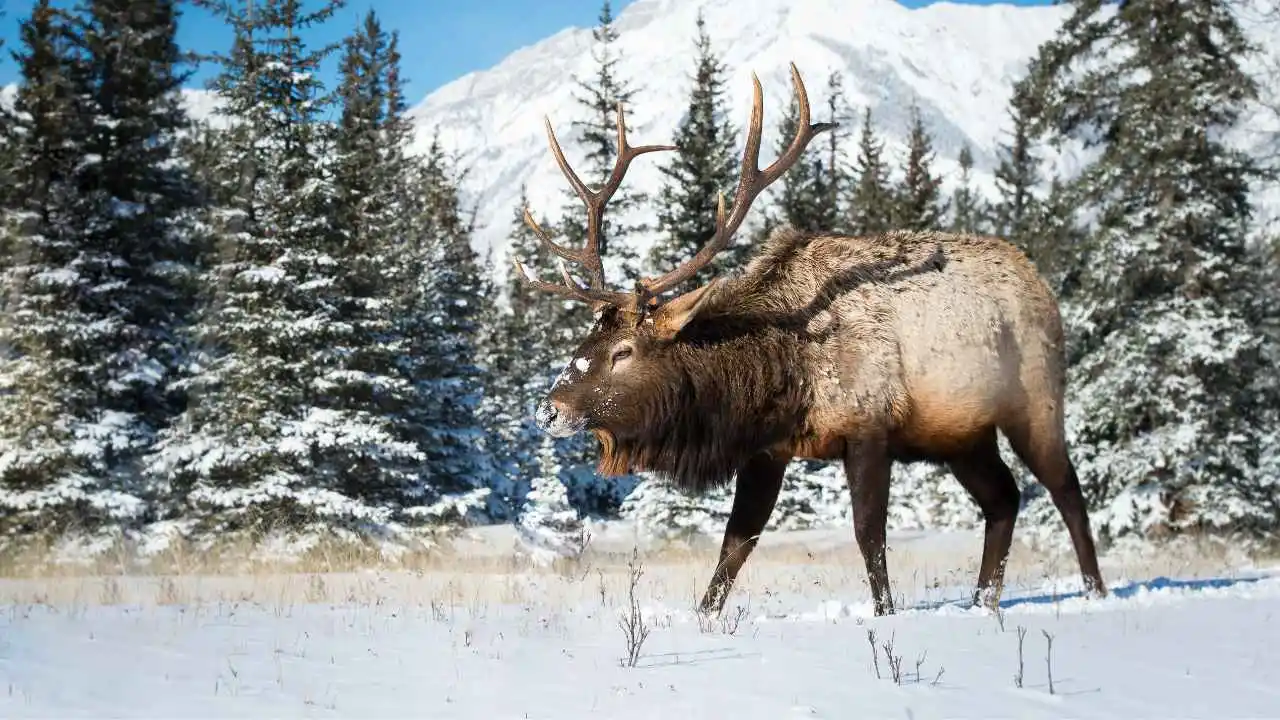
In winter, when the ground is covered with snow and food is scarce, elk eat different things to survive. They mainly feed on the twigs and buds of trees like willows and aspen. They also nibble on the lower branches of pine and fir trees and sometimes eat the woody parts of sagebrush plants. Even though grasses are not as nutritious in winter, elk may still graze on them if they are accessible.
What is the elk’s main food source?
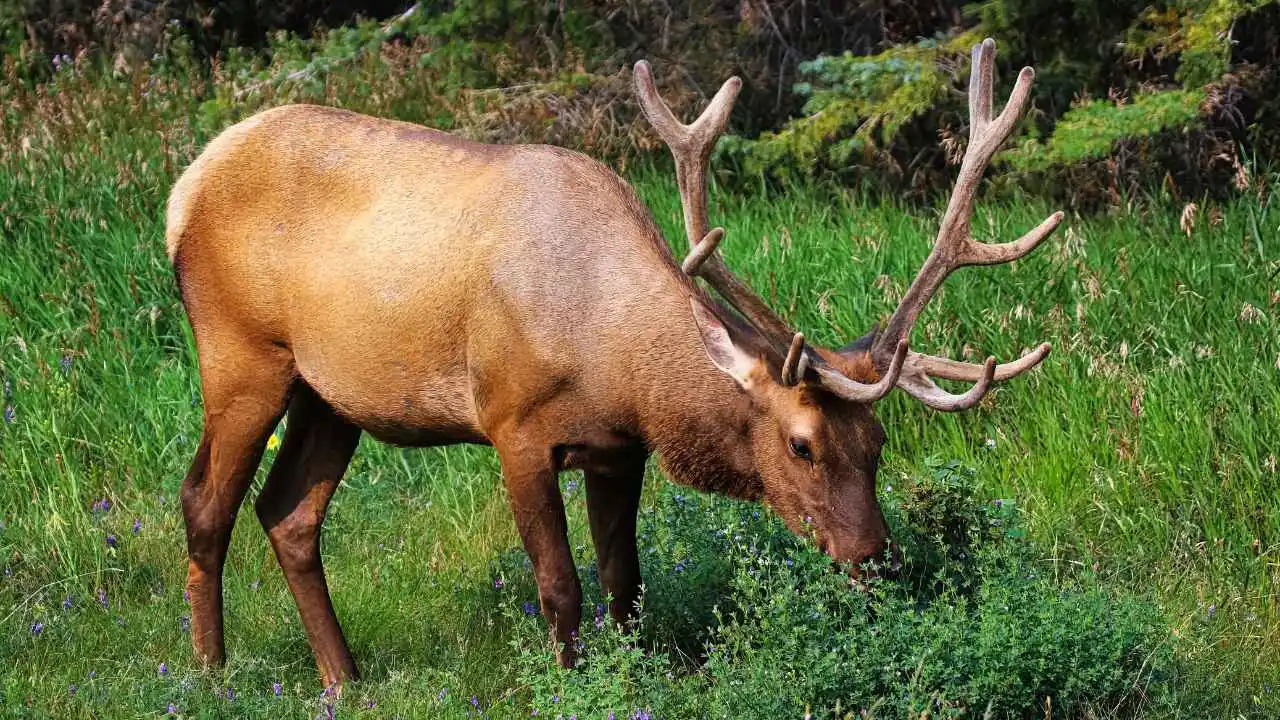
Elk mainly eat plants. They graze on grasses, nibble on wildflowers and other broad-leaved plants called Forbes, and eat twigs and leaves of shrubs. Elk are good at adapting their diet to what is available in their surroundings.
What predators eat Elk?
Elk face natural predators like wolves, grizzly bears, mountain lions, coyotes, and occasionally, black bears. Human hunters also impact elk populations through managed hunting, influencing the natural balance in ecosystems where elk need.
Frequently Asked Questions:
What is the main food source for elk?
Elk primarily eat grasses, forbes, and shrubs, and during winter, they may consume tree bark and twigs.
Do elk eat other animals?
No, elk are herbivores and do not consume meat. Their diet consists of plant materials.
How much do elk eat in a day?
On average, an adult elk consumes around 15 to 30 pounds of forage per day, but this can vary based on factors like season and availability of food.
What do elk eat in winter?
In winter, elk often feed on woody browse, including shrubs, tree twigs, and bark, as well as available grasses and sedges.
Do elk eat crops on farms?
In areas where elk coexist with agriculture, they may eat crops like winter wheat and agricultural residue, especially during winter.
How do elk adapt their diet to seasonal changes?
Elk are adaptable herbivores and adjust their diet based on the availability of different plants, such as grazing on grasses in the summer and browsing on woody vegetation in winter.
What nutritional challenges do elk face in their diet?
Elk may face nutritional challenges, particularly in winter when forage quality is lower. they compensate by consuming larger quantities of less nutritional food.
How does the elk’s digestive system help them extract nutrients?
Elk have a specialized digestive system, including a multi-chambered stomach, allowing them to efficiently extract nutrients from fibrous plant material.
Are there conservation concerns related to the elk diet?
Wildlife managers monitor elk populations to ensure they have access to diverse and healthy habitats, especially during winter, to maintain the overall health of the populations.
How can human activities impact the elk diet?
Human activities, such as habitat destruction or changes in land use, can affect the availability of food for elk. Managed hunting can also influence elk populations and their foraging behavior.

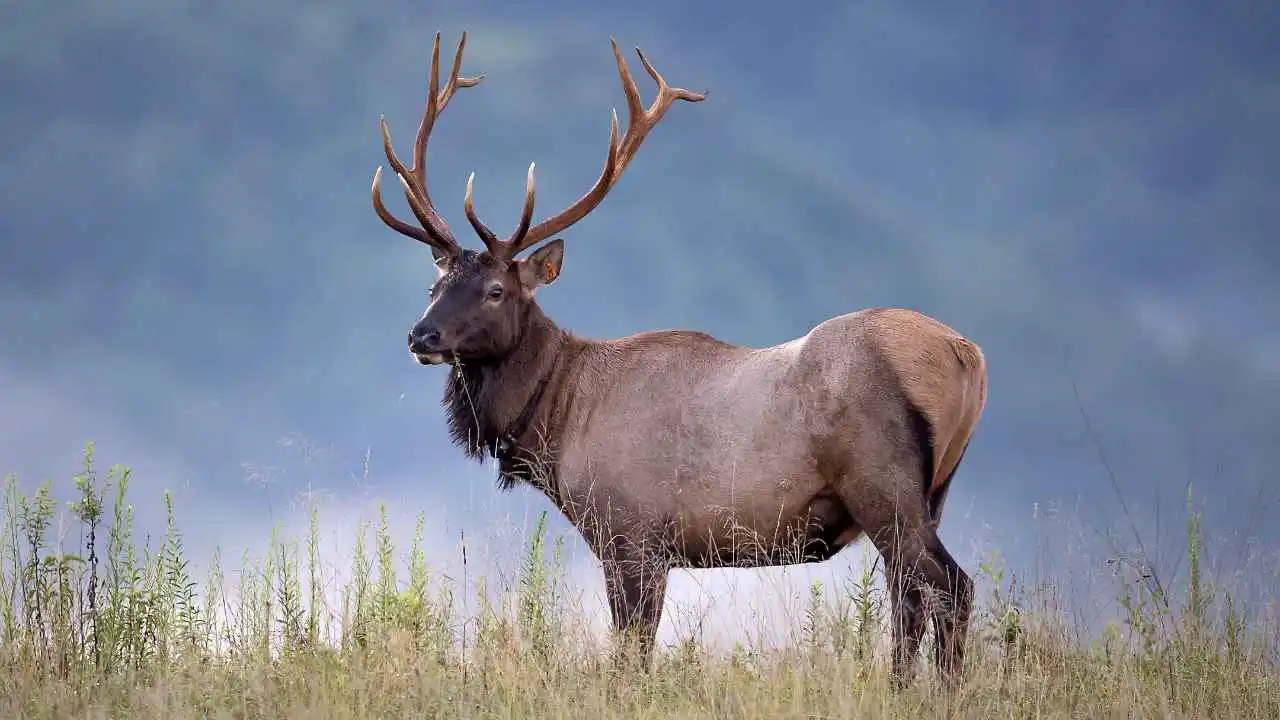





Leave a Reply